What an exciting meal we had! Lisa was kindly helping serve the plates with spaghetti and a juicy dark red meat and tomato sauce. We always serve $’s plate first and often put it in the freezer to cool a few minutes. She did that, took two plates over to our table, and when serving her father, discovered the momentum peculiar to moist spaghetti on a moist plate. It quietly slithered over the side of the plate, onto the table, and down in a red splat on the green carpet. John nimbly leapt aside, ran for a spatula to rake it up, and began cleaning as I opened the freezer door for $’s plate. Splat! The plate evidently slid to rest against the door when Lisa closed it and naturally exploded onto the floor. Kate shared with John, I shared with $, and we ate happily ever after. The moral is: the family that messes together mucks together.
Did you know that English people don’t have odds and ends? It isn’t that they are neater than we, but they have “bits and pieces”. They also have “odds and sods”, various things of little importance.
Also, though I’ve read of chain stores here, it can just as well be “multiple stores”. I guess that’s all right unless they abbreviate it to MS. Paula (friend I met as a cashier at the supermarket) had never heard of multiple stores. Perhaps it’s something written, not spoken, or it comes from a different section of the country.
The butcher said, “here I am standing like a lemon.” These things are easier said than explained! Roughly it means you’re in a hurry, but momentarily pause because you can’t think what to do next.
We left for the Netherlands Friday morning and returned today, Tuesday. Windmills are not dead! We must have seen at least 10 on the drive up to Amsterdam, one of which had sails and was actually working. This was an exciting drive for $ who recognizes and calls by name trains, tracks, water, windmills, cows, sheep, horses, boats, and trucks.



Our luxurious hotel overlooked the junction of five canals. There seems to be more traffic in waterfowl than boats in the winter.
Our first morning in Amsterdam began like no other – John called an American in London as arranged and took a new job! He’d been interviewed on Thursday, and there were a few questions on both sides. He is supposed to start work May 1, having a chance to be with us when the girls have a month off from school. The company is downtown in Manhattan. So, we’re all headed back to New York eventually, though the children and I may stay in England for school and housing reasons for a while longer.
Amsterdam is the diamond center of the world. We walked to the van Moppes diamond shop from our hotel. To cut a one-carat diamond takes eight hours! Then it must be shaped, the facets cut, and the polishing done. We learned that a great percentage is lost in cutting, but that all dust is saved and used, mixed with olive oil, for cutting and polishing. Only diamonds are strong enough to cut diamonds.
Our little Japanese guide spoke fractured English, but much of what she talked about was on signs. She and I talked quite a while after the tour, and she said though she’d lived in Holland for seven years, her Dutch was atrocious. She claimed that people who speak English will try their best to understand, but the Dutch people insist you speak their language perfectly. If she mispronounces a Dutch word, she will be told bluntly that she is not understood.
Dutch people, unlike the English, eat publicly all the time. Restaurants are open earlier than in England, and informal snack bars are everywhere. There are pastry shops, cafes, burger places, pizzarias, doughnut stores, and coffee shops galore. Not only are the eateries there, but there are always people inside snacking.
We rode the tram into the downtown area and took the hour-long canal tour of the city. When the recorder tape broke, the man in charge announced things in Dutch, English and German, and a passenger volunteered to translate to French. We were impressed with their linguistics. We found that Dutch children are required to study those four languages in school.
Below are photos of a bridge over a canal, a wide canal, Central Station, interesting facade of a house, and a tiny white building that is only one window wide.
The canals do not stink, being kept flushed by the tide. Only one river is a natural waterway; all the canals are man-made. I used to feel sorry for these people having to cope with water, and now I find it is by choice in Amsterdam!
John spotted the highlight of our walking tour – movers using block and tackle from a hook at the top of a house to lift crates through the wide upper window. A majority of the buildings seem to have these hooks on beams.
Most canals have one-way streets on both sides, and cars are parked by the squeeze method. Wherever you think a car wouldn’t fit, there is a car. A pedestrian’s life is in almost as much danger from bicycles as cars – the bikes WHIZ where the cars only speed.
We saw the grey stone royal palace from the outside and Rembrandt’s house from the inside. R’s house is full of his etchings and has a good display showing how etchings were made. A copper plate is coated with an acid-proof layer, that layer is scratched away by the artist to expose the metal, and an acid bath eats into the exposed lines. The plate is cleaned, inked, and then printed on damp paper.
We went in one large church that made us appreciate more worshipful attitudes elsewhere. Chairs were faced toward two organs rather than the altar, social action signs were hanging from the rafters, flower prints were sold from stalls, and there were vending machines and tables set up for coffee drinkers! We were impressed with the HUGE carved wooden canopy over the pulpit. It had angels, religious figures, windows with people inside, and little people hanging over balconies. Our overall impression of church life in Holland was that few people bother. One lovely old church had been turned into a water sport place, and many of its windows were broken. Sad.
We’d read that the Dutch do not guard their privacy as the English do. On a long rambling walk after dark, we found that we could easily see into living rooms. On a cold clear night, they all looked cozy and warm.
On a clear day we drove north of Amsterdam to Volendam, built on the water. Two rows of houses were built on top of the dyke – tiny houses that we could see right through on either side of a one-way lane. The rest of the town was set down below sea level behind the dyke.
Edam, where the cheese of that name originated, was a small community built around a canal. We also poked around Hoorne before driving over the biggest dyke – the one closing off what used to be the Zeiderzee. We made a big circle around that water, driving on roads where the land on both sides was newly reclaimed and not yet productive. It was so empty – empty of plants, animals, and houses. Swinging toward Amsterdam, we were almost relieved to be among living things again.
In each country travelers like to spot local colour. Many times national quirks are hidden or minimized in larger hotels. Most places we’ve been serve croissants for breakfast from the French custom, bacon and eggs from the English, porridge from the Scots, and cold cereals for Americans. In addition to the above, in Amsterdam there were pots and pots of sprinkles – milk chocolate, dark chocolate, vari-coloured, white, white and pink mixed. I couldn’t resist asking what they were used for. The waitress in national costume replied, “The Dutch have a peculiar habit of sprinkling these things on buttered bread.” Later that day I saw shelves full of sprinkles in a tiny grocery store. Each package had a picture of a thick slice of bread with these sprinkles being poured on top of the butter.
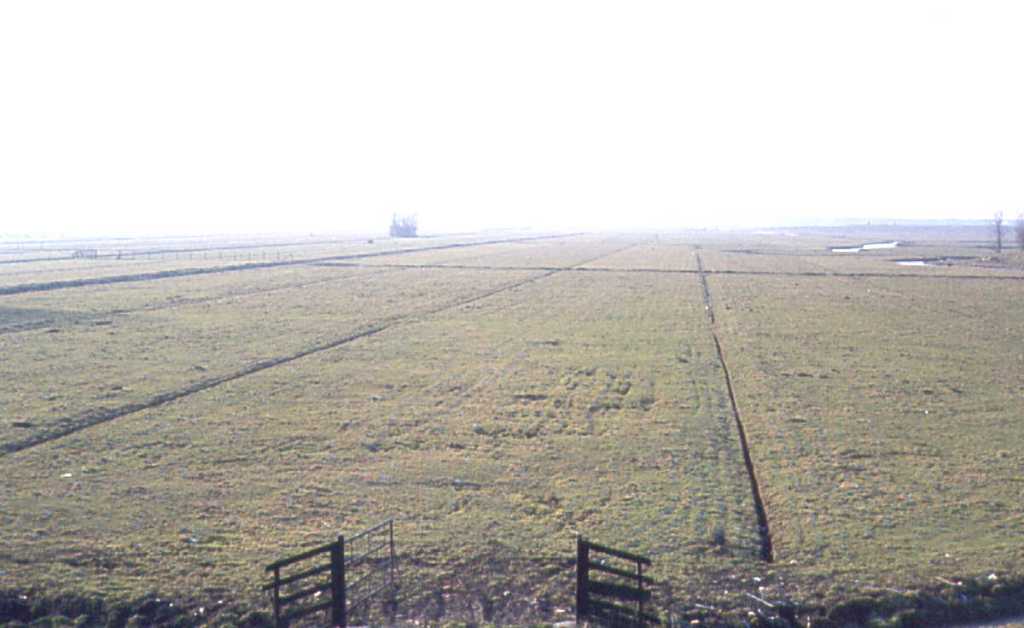


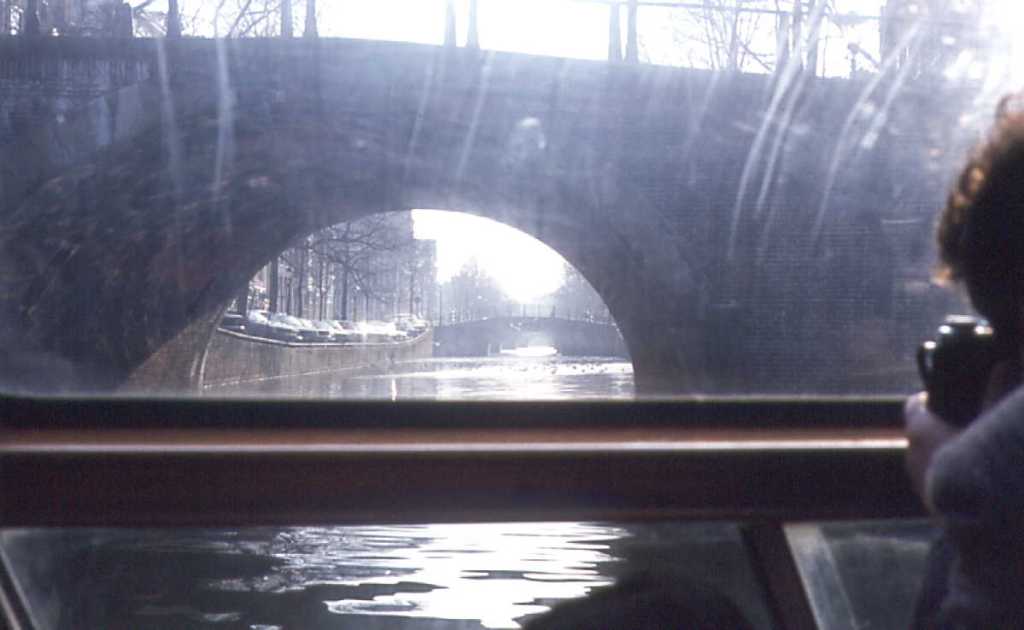
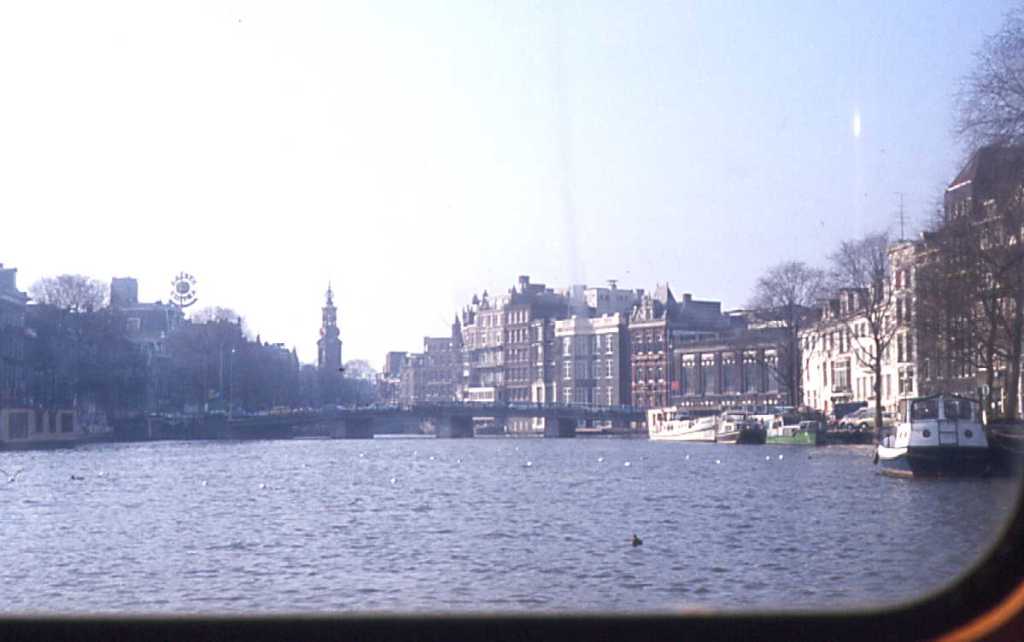


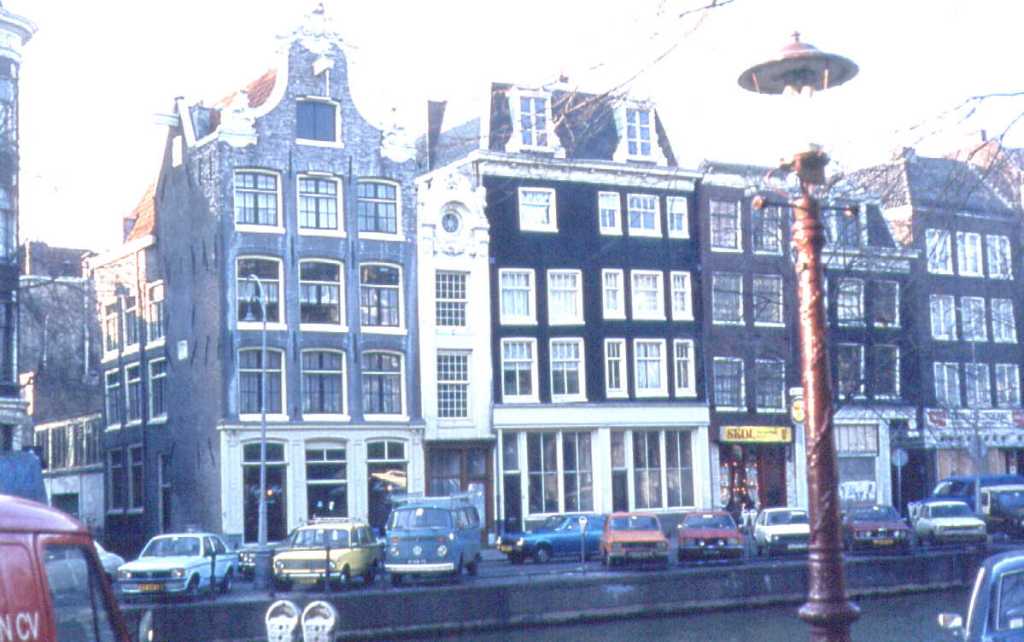



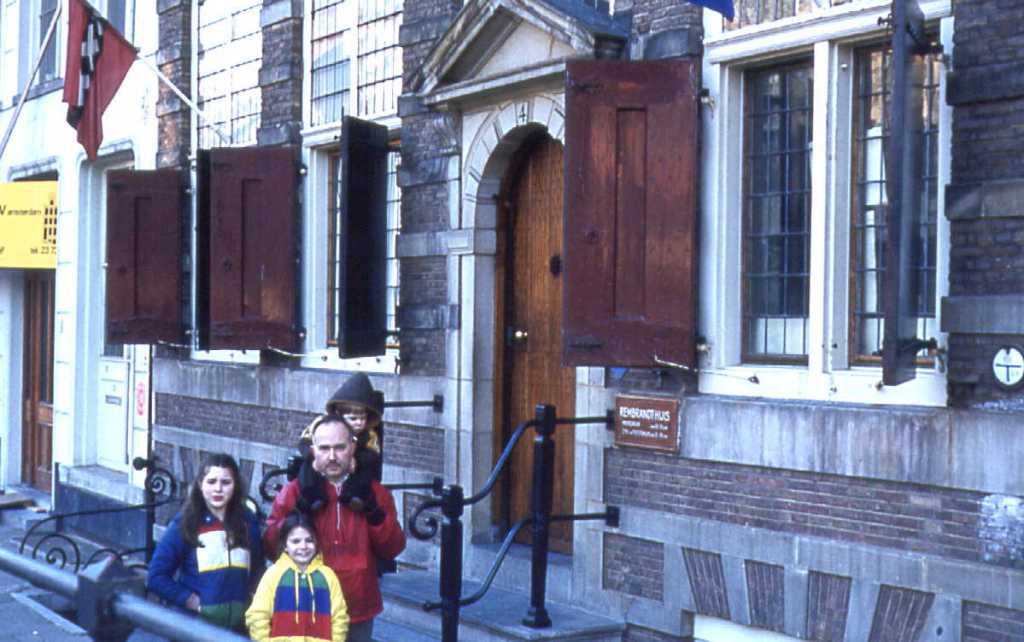


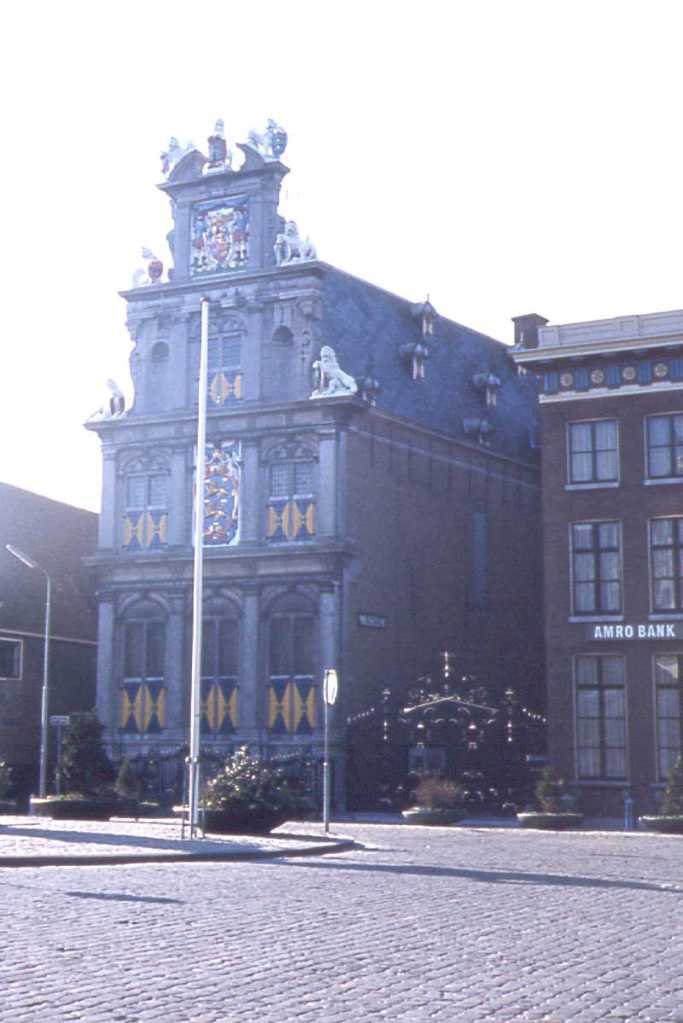
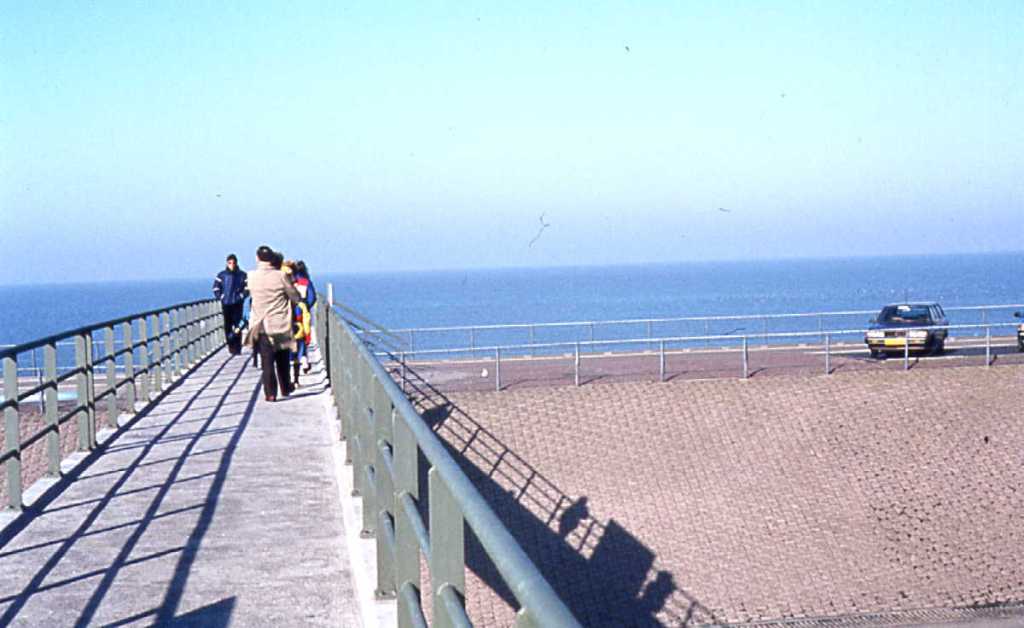
I too loved Amsterdam (as did my character Amanda) I was so enthralled by the sprinkles that every time I pass through Amsterdam airport I buy some. I love them sprinkled on buttered toast and on top of my trifle.
LikeLike
If we bought any sprinkles, I didn’t confess it.
LikeLiked by 2 people
So that is where sprinkles on doughnuts originated! This was a great addition to my limited memory of Amsterdam! I have a photo of the Central Station (doesn’t everyone who has been?) and a few other street pictures. You definitely saw much more than I.
LikeLike
When I wrote the letters, I had no idea what photos would be usable. This is like a puzzle, putting words and photos together 40 years later.
LikeLiked by 1 person
Sprinkles on bread? Sounds like a great country although I’m not sure I’m a sprinkle kind of gal! Love the spaghetti story. There is nothing like family tales told when everyone is grown up.
LikeLike
I had forgotten all about that spaghetti evening. I’m sure spills were common with a toddler in the house.
LikeLiked by 1 person
I always love your writing, but I think this one is one of my favorites. That first paragraph had me laughing out loud. I even had to go read it to Chris (who was also laughing). I’m so glad windmills haven’t died out. I loved falling asleep to the rhythm of the Zephyr (the windmill up the hill from us) when our windows are open and seeing Zephyr spinning as I round the top curve of the mountain. Never heard of the sprinkles on bread. Can’t say I’m inspired to try, but now I won’t look so astonished if people around me choose to do that as I travel.
LikeLike
I would enjoy your Zephyr, too. The sprinkles were long-forgotten, but I am amazed that I wrote there were many types of them in a tiny grocery store. That shows how important they were in that area.
LikeLiked by 2 people
As always, I love hearing about your life in Europe-I am going to try some “sprinkle bread” I will tell you that I laughed aloud at the spaghetti story! I guess we all have one-but not times two at the same meal! Haha!
LikeLike
That slithery spaghetti was a mess! It couldn’t have been that catastrophic, since I didn’t remember it until I read the letter.
LikeLiked by 1 person
Hi
Wonderful place. Beautiful picture. Good you share your visit it’s city. What it’s spaghetti? I live about your life in Europe I guess you always same time together take meal. I like your post.🌷
LikeLike
Spaghetti is a form of pasta. It looks like long thin sticks until cooked, then it bends every way possible. It originated in Italy. We usually serve it topped with a thick tomato sauce. We usually ate dinner at the same time every evening, since John was working in an office all day.
LikeLiked by 1 person
Thank you so much 🌷! Iam so glad you discrib it’s.
LikeLike
If I knew how to send a picture with a comment, I would do that.
LikeLiked by 1 person
When write a comment the picture on kebord near by left side🙂 it’s sin then u click. On and all pictures saw after u scroll after by all saw, smile, flower,men women,car,flag, couple,road sine, vehicle ext.
LikeLike
I can’t see well and do not see pictures on the left side of the keyboard. I’m sorry. Are you talking about a computer keyboard or on a cell phone? Maybe I’m in the wrong place.
LikeLiked by 1 person
I use cell phone. Cell phone keyboard. .
LikeLike
I’m on my phone now and found a photo of spaghetti. I long-pressed it, but WordPress said it doesn’t support putting it in here.
LikeLiked by 1 person
Ok
LikeLike
Can I send u screen short for keyboard
LikeLike
Yes. I’ll be happy to look at it. Maybe I looked looked at the wrong thing.
LikeLiked by 1 person
You send me your email address. I send you .
LikeLike
Could you go to my contact page to send me a message? I prefer not to put my email address in a comment. Thank you.
LikeLiked by 1 person
Ok ,Thank you so much.
LikeLiked by 1 person
Spaghetti (especially sauce) accidents are the worst! Tomato is so difficult to clean off things. I haven’t been to the Netherlands for decades. I remember that it was pretty, that the people seemed VERY tall and that there were many, many bicycles. I didn’t know that the Dutch insisted on perfection in their language; I don’t know any words, so I’m relatively safe. Here from Ally’s by the way!
LikeLike
Thank you for coming by. I’m glad we have Ally in common.
I don’t know that Dutch people are still particular about how people speak their language. That was 40 years ago. I hadn’t thought about it, but the person I was talking to felt mistreated. Possibly she was speaking only of herself, not everyone who spoke Dutch as a second language. I’m glad you made me rethink it. She did say that English-speaking people were much more lenient with her pronunciations.
LikeLike
Keen observations Anne and you must have been close to the town of Hindeloopen at one point going around the Zuiderzee. It is near Workum.
The beams on the house I was told were the from the old days when they hoisted up agricultural products from the ships. Hay and animal feed and so on. But so useful for moving furniture in and out.
And we have bits and pieces and odds and ends and bibs and bobs!!!
LikeLike
I’m sure John could tell you what route we took, but I was just drinking in the scenery. Holland was really different from anything I’d seen before. Did you spend a lot of time there?
Bibs and bobs!! Love it!! I wish I could adopt that, but no one here would know it.
LikeLike
The Netherlands has a unique culture, ethos and landscape. In my travels in Europe, I learnt that Dutch immigrants were imported to several other countries to introduce farming methods of low lying boggy landscapes, as they were considered the expert. All those canals for instance. I have seen them in Poland and also in Denmark. There are loads of places in Poland that are called, ‘Nowy…..such and such.’ This indicates one of these villages where Dutch immigrants came to settle in the ?16/7th century or earlier.
And they also gave the world the gorgeously distinctive Dutch Gable architecture that’s seen in other European countries. Their shipping empire was also impressive, spanning across to Indonesia and the tulip fever period stands out in economic history. Given all of this, it is little wonder you were absorbed, as I was, in the scenery through Holland. I took a train trip up to the north of the Zuiderzee and it took 5 hours, so I got to see a lot during that time! I am so thankful for that opportunity, even 18 years later.
LikeLike
That’s marvelous that you could travel in Holland and that you know so much about the history.
LikeLiked by 1 person
And Bibs and bobs – you could introduce a new idiom in your area! What fun!
LikeLike
I might try that.
LikeLiked by 1 person
Lots of interesting tidbits in here Anne and I liked reading about some of their customs, including how they would not tolerate any botching of their language. Interesting. I can’t say I’ve ever seen pictures of the canals, more pictures of windmills. Interesting the canal water is flushed and moves so does not smell. I wonder why the sprinkles are such a hot item there? It makes me think of cinnamon toast which I’ve not had in years – cinnamon and brown sugar sprinkled on hot buttered toast. Now I wish I had some. All I have is the cinnamon. I like the British expressions too and some carry over into Canadian expressions. We did use “bits and pieces” but I’d never heard of “odds and sods”.
LikeLike
We haven’t had cinnamon toast in several years. Must remedy that!
LikeLiked by 1 person
Yes, the taste, not to mention the smell which filled the kitchen. I agree!!
LikeLiked by 1 person
The spaghettis story is great! Your adventures in Holland sounded fun. 😄. Here’s the spaghetti someone was asking about. 🍝
LikeLike
I wonder if there is more to your spaghetti than a tiny icon. I don’t know how to send photos in comment. Thanks for putting it there.
LikeLiked by 1 person
Can only get that, because my iPad has lots of silly little icons I can type instead of a word.
LikeLike
Yes. I’ve had that on my phone. Still, I appreciated your sending the spaghetti icon.
LikeLiked by 1 person